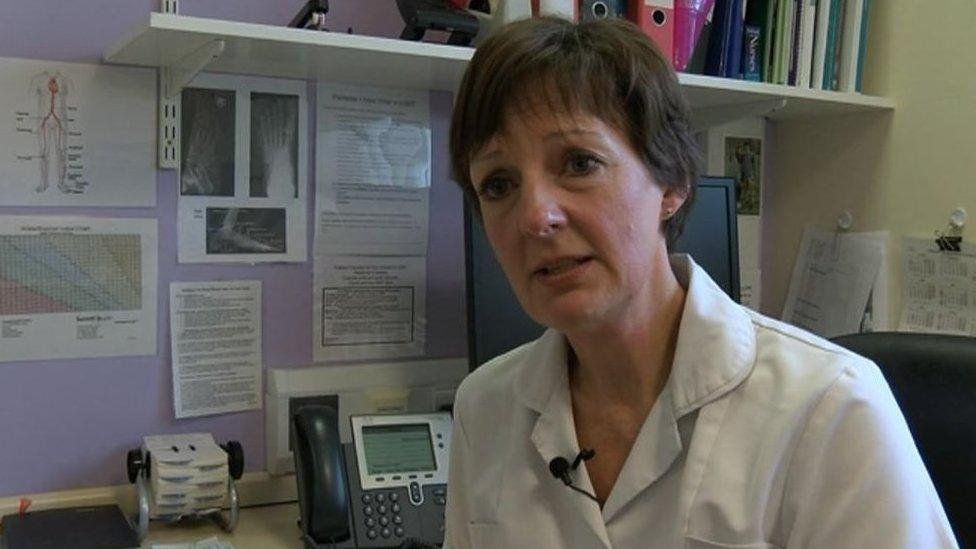Diabetes amputations 'eight times more likely' in parts of England
- Published

Katharine Speak, a diabetes specialist in North Yorkshire, said people are not seeking medical help quickly enough
People living with diabetes in some parts of England are eight times more likely to suffer an amputation than others, latest figures show.
Scarborough in North Yorkshire, has the joint highest rate of amputations along with Mansfield in Nottinghamshire.
They had 4.9 per 1,000 adults with diabetes, eight times more than Brent, north-west London, with only 0.6 per 1,000 patients in the past three years.
Overall, the number of patients having an amputation is on the increase.
According to the Hospital Episode Statistics and Quality and Outcomes Framework, there were 19,066 amputations carried out between 2009-12, and 22,109 between 2012-15 - an increase of 3,043.
Dave Campbell, from Scarborough, lost four toes due to complications with diabetes.
Dave Campbell lost four toes due to diabetes
He says he got an ulcer in his foot which became infected, resulting in him having two toes amputated. The same thing happened again two years later.
"Fortunately I still have the big toe, which is very helpful as far as balance is concerned," he said.
"Everything I do has to be done at a slow pace."
Katharine Speak, the lead on diabetes and high-risk podiatry services in North Yorkshire, said people with diabetes may not always be getting the right treatment at the right time.
"We are not seeing the patient soon enough," she said.
"Sometimes they feel that they can deal with things themselves and once it's got out of control there is very little we can do to get it back."
Chris Gosling, from Scarborough's Diabetes UK support group, said: "There is the impression that Scarborough is a nice holiday town, but in fact it has one of the highest deprivation rates in Yorkshire.
"People aren't aware of the complications of diabetes, they do not have a GP possibly, there are a lot of hard to reach groups who don't use the medical facilities, and it is not diagnosed quickly enough."
Stephen Ryan, Regional Head of Diabetes UK said: "We know that up to 80% of amputations can be avoided with good diabetes care and improved footcare.
"We need to make sure that everyone with diabetes gets good quality annual foot checks and knows how to reduce their risk of foot problems, and that anyone who has a foot problem gets the right care to prevent or treat it.
"It is particularly important that if anyone with diabetes has a foot infection they get urgent attention from a multidisciplinary team of specialists."
- Published24 October 2016

- Published24 October 2016

- Published24 October 2016
